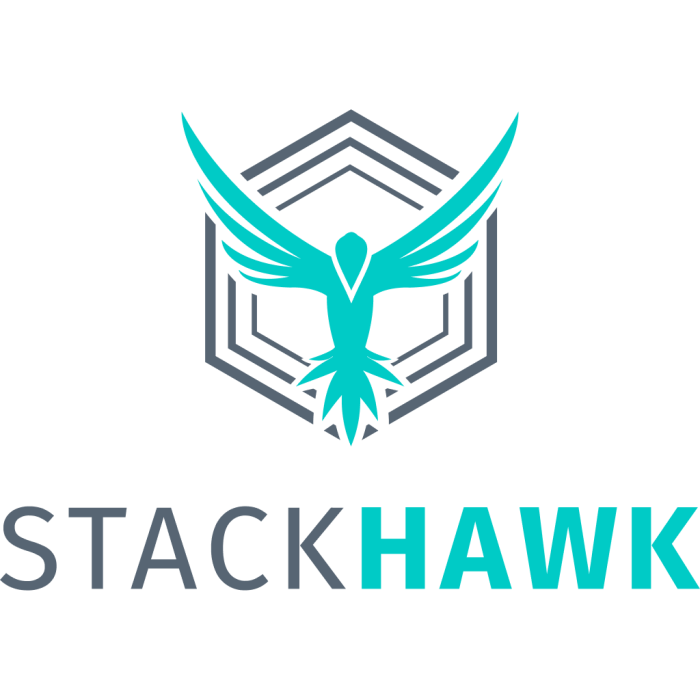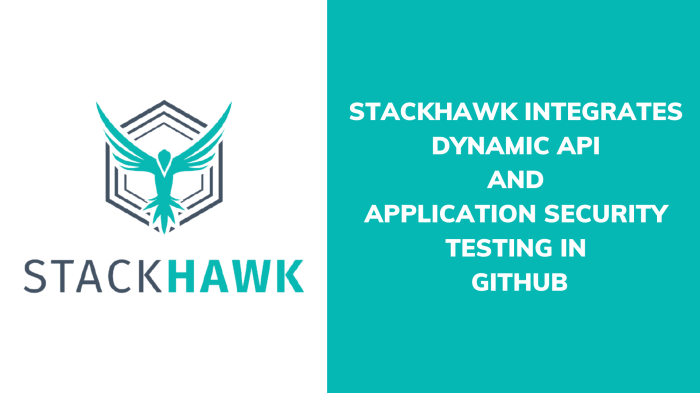
StackHawk dynamic app testing is a powerful tool for ensuring the security of your web applications. It uses dynamic application security testing (DAST) to identify vulnerabilities that could be exploited by malicious actors. StackHawk is a popular choice for developers and security professionals alike, thanks to its ease of use, comprehensive scanning capabilities, and seamless integration with existing workflows.
By analyzing your application’s behavior in real-time, StackHawk can uncover a wide range of security flaws, including SQL injection, cross-site scripting (XSS), and authentication issues. This proactive approach helps you identify and fix vulnerabilities before they can be exploited, reducing the risk of data breaches and other security incidents.
Types of Vulnerabilities Detected by StackHawk
StackHawk is a dynamic application security testing (DAST) tool that helps developers find and fix security vulnerabilities in their web applications. It works by sending automated requests to your application and analyzing the responses for signs of security flaws.StackHawk can detect a wide range of vulnerabilities, including those that can lead to data breaches, denial-of-service attacks, and other security incidents.
Common Vulnerabilities
StackHawk can identify common vulnerabilities such as:
- Cross-Site Scripting (XSS):XSS vulnerabilities allow attackers to inject malicious scripts into a website, which can then be executed by other users. This can allow attackers to steal user credentials, hijack accounts, or perform other malicious actions.
- SQL Injection:SQL injection vulnerabilities allow attackers to inject malicious SQL code into a web application, which can then be used to access or modify sensitive data. This can allow attackers to steal customer data, manipulate financial records, or even take control of the entire database.
- Authentication and Authorization Flaws:Authentication and authorization flaws can allow attackers to bypass security controls and gain unauthorized access to sensitive data or resources. This can allow attackers to steal user credentials, impersonate other users, or perform other malicious actions.
- Insecure Direct Object References:Insecure direct object references allow attackers to access or modify sensitive data or resources by directly manipulating URLs or other input parameters. This can allow attackers to access or modify sensitive data, delete files, or perform other malicious actions.
- Server-Side Request Forgery (SSRF):SSRF vulnerabilities allow attackers to make requests to internal servers or other resources on behalf of the web application. This can allow attackers to access sensitive data, bypass security controls, or even perform denial-of-service attacks.
Less Common Vulnerabilities
StackHawk can also detect less common vulnerabilities such as:
- Path Traversal:Path traversal vulnerabilities allow attackers to access files or directories outside of the intended scope of the web application. This can allow attackers to access sensitive data, modify files, or even execute arbitrary code on the server.
- Remote Code Execution (RCE):RCE vulnerabilities allow attackers to execute arbitrary code on the server. This can allow attackers to take complete control of the server, steal data, or perform other malicious actions.
- Denial-of-Service (DoS):DoS vulnerabilities allow attackers to prevent legitimate users from accessing a web application. This can be achieved by flooding the server with requests, overloading the server’s resources, or exploiting other vulnerabilities.
- Misconfiguration:Misconfiguration vulnerabilities arise from improper configuration of web servers, databases, and other components. This can lead to a variety of security vulnerabilities, such as allowing unauthorized access to sensitive data, enabling insecure protocols, or exposing sensitive information.
Impact of Vulnerabilities
The impact of a vulnerability depends on the specific vulnerability and the context in which it is exploited. However, some of the potential impacts of vulnerabilities include:
- Data Breaches:Vulnerabilities can allow attackers to steal sensitive data, such as customer information, financial records, or intellectual property. This can lead to significant financial losses, reputational damage, and legal liabilities.
- Denial-of-Service Attacks:Vulnerabilities can allow attackers to prevent legitimate users from accessing a web application. This can disrupt business operations, lead to financial losses, and damage the reputation of the organization.
- System Compromise:Vulnerabilities can allow attackers to gain control of the server or other systems. This can allow attackers to steal data, install malware, or launch further attacks.
- Reputational Damage:The discovery of vulnerabilities can damage the reputation of an organization, leading to a loss of customer trust and business.
Reporting and Remediation

StackHawk’s dynamic application security testing (DAST) platform provides comprehensive reporting and remediation features to help you identify and fix security vulnerabilities in your web applications. It generates detailed reports that highlight potential security issues, provide actionable insights, and guide you through the remediation process.
StackHawk dynamic app testing is a powerful tool for finding vulnerabilities in your web applications. It’s like a security scanner that goes beyond static analysis to test your app in real-time, mimicking how users interact with it. Just like a good meal, a secure app needs a solid foundation, and StackHawk helps ensure that your app is well-protected.
Speaking of good meals, I recently tried a recipe for spaghetti squash with easy tomato sauce , and it was surprisingly delicious! Getting back to StackHawk, it’s a great way to identify potential security issues before they can be exploited, so you can rest assured knowing your app is safe and sound.
Report Generation
StackHawk generates reports on detected vulnerabilities in a variety of formats, including HTML, JSON, and CSV. These reports provide a clear and concise overview of the identified security issues, along with detailed information to help you understand and address them.
Report Content
StackHawk reports include the following information:
- Vulnerability Summary:A high-level overview of the detected vulnerabilities, including the number of vulnerabilities found, their severity, and the affected components.
- Vulnerability Details:Detailed information about each vulnerability, including its type, description, location, severity, and potential impact.
- Remediation Guidance:Recommendations on how to fix each vulnerability, including code examples and best practices.
- Vulnerability Evidence:Evidence of the vulnerability, such as screenshots, HTTP requests and responses, and code snippets.
- Timeline and History:Information about when the vulnerability was discovered, the last time it was tested, and any changes that have been made to the application since it was last tested.
Remediation Facilitation
StackHawk simplifies the remediation process by providing several features, including:
- Vulnerability Prioritization:StackHawk automatically prioritizes vulnerabilities based on their severity and potential impact. This helps you focus on the most critical issues first.
- Integration with Issue Tracking Systems:StackHawk integrates with popular issue tracking systems, such as Jira and GitHub, allowing you to easily create tickets for vulnerabilities and track their progress.
- Remediation Guidance and Resources:StackHawk provides detailed remediation guidance and resources, including code examples, best practices, and links to external documentation.
- Retesting and Verification:StackHawk allows you to retest your application after making changes to ensure that the vulnerabilities have been fixed.
Use Cases and Real-World Examples

StackHawk is a powerful tool that can be used to improve the security of applications in a variety of industries and use cases. Here are some real-world examples of how StackHawk has been used to identify and remediate vulnerabilities in applications.
Examples of StackHawk’s Impact on Organizations
StackHawk has helped organizations of all sizes improve their application security posture. Here are some examples:
- A large financial institutionused StackHawk to scan its online banking application and discovered several critical vulnerabilities, including SQL injection and cross-site scripting (XSS). These vulnerabilities could have allowed attackers to steal sensitive customer data or compromise the entire banking system. StackHawk helped the institution identify and remediate these vulnerabilities before they could be exploited, preventing a major security breach.
StackHawk dynamic app testing is a powerful tool for finding vulnerabilities in your web applications, but sometimes you just need a break from the technical stuff. If you’re looking for a fun and creative project, check out this apple plush pillow tutorial with download.
It’s a great way to unwind and let your inner crafter shine. Once you’re back in the testing zone, you’ll be ready to tackle those security challenges with renewed energy and focus.
- A healthcare providerused StackHawk to scan its patient portal and discovered a vulnerability that could have allowed attackers to access sensitive patient information. StackHawk helped the healthcare provider quickly identify and patch the vulnerability, protecting patient data from unauthorized access.
- An e-commerce companyused StackHawk to scan its shopping cart application and discovered a vulnerability that could have allowed attackers to steal customer credit card information. StackHawk helped the company identify and remediate the vulnerability before it could be exploited, preventing a major data breach.
Industries and Application Types Where StackHawk is Particularly Valuable
StackHawk is particularly valuable for organizations in industries where security is paramount, such as:
- Financial services: Banks, credit card companies, and other financial institutions rely on StackHawk to secure their online banking applications, payment processing systems, and other critical systems.
- Healthcare: Hospitals, clinics, and other healthcare providers use StackHawk to secure their patient portals, electronic health records (EHRs), and other sensitive systems.
- E-commerce: Online retailers use StackHawk to secure their shopping cart applications, payment processing systems, and other critical systems.
- Government: Government agencies use StackHawk to secure their websites, applications, and other critical systems.
- Education: Schools and universities use StackHawk to secure their student portals, online learning platforms, and other critical systems.
StackHawk dynamic app testing is a game-changer for security, but sometimes you need to visually showcase its power. That’s where product collages come in! If you’re looking for a way to make your blog posts about StackHawk more engaging, check out this helpful guide on how to make product collages for your blog.
With a compelling collage, you can visually demonstrate how StackHawk helps developers find and fix vulnerabilities, making your blog posts more impactful and shareable.
Examples of Specific Use Cases
StackHawk can be used to secure a wide range of applications, including:
- Web applications: StackHawk can be used to scan web applications for vulnerabilities such as SQL injection, XSS, and authentication bypass.
- Mobile applications: StackHawk can be used to scan mobile applications for vulnerabilities such as data leakage, insecure storage, and insecure communication.
- API: StackHawk can be used to scan APIs for vulnerabilities such as authentication bypass, injection, and authorization issues.
- Microservices: StackHawk can be used to scan microservices for vulnerabilities such as data leakage, insecure communication, and authentication bypass.
StackHawk in Action, Stackhawk dynamic app testing
StackHawk can be used to improve the security of applications at all stages of the software development lifecycle (SDLC). Here are some examples:
- During development: Developers can use StackHawk to scan their code for vulnerabilities before it is deployed to production.
- During testing: Testers can use StackHawk to find vulnerabilities that may have been missed during manual testing.
- In production: StackHawk can be used to continuously monitor applications for vulnerabilities and alert developers to any new risks.
Best Practices for Using StackHawk: Stackhawk Dynamic App Testing

StackHawk is a powerful tool for dynamic application security testing (DAST), but like any tool, its effectiveness depends on how it is used. By following best practices, you can maximize the value of StackHawk and ensure that your applications are secure.
Configuration
Configuration is crucial for ensuring that StackHawk scans effectively and accurately. The following best practices help optimize your configuration:
- Define a Clear Scope: Specify the exact URLs, endpoints, and functionalities that should be included in your scans. This prevents wasted time and resources by focusing on the most critical parts of your application.
- Configure Authentication: If your application requires authentication, set up StackHawk to properly authenticate with your application. This allows StackHawk to access and test protected areas.
- Customize Scan Settings: StackHawk offers various scan settings, including scan depth, timeout, and attack types. Adjust these settings based on the specific needs of your application and the level of security you require.
- Use Scan Profiles: StackHawk allows you to create scan profiles that define specific configurations for different scenarios. For example, you can create a profile for production scans that are more thorough and another profile for development scans that are faster.
Scanning
The way you conduct your scans has a significant impact on the quality of the results. Consider these best practices for optimal scanning:
- Run Regular Scans: Regular scans are essential for identifying vulnerabilities early in the development lifecycle. Schedule scans frequently, such as during development sprints or after code changes.
- Use a Variety of Scan Types: StackHawk offers different scan types, including full scans, targeted scans, and API scans. Utilize the appropriate scan type based on the specific areas you want to test.
- Test Different User Roles: Scan your application from the perspective of different user roles to identify vulnerabilities that might be accessible only to specific users.
- Use Real-World Data: Test your application with real-world data, such as user input, to simulate realistic attack scenarios.
Reporting
Effective reporting helps you understand the results of your scans and prioritize remediation efforts. Follow these best practices for reporting:
- Analyze the Results: Review the vulnerabilities identified by StackHawk and prioritize them based on their severity, impact, and exploitability.
- Use the StackHawk Dashboard: The StackHawk dashboard provides a comprehensive overview of your scan results, including vulnerability details, severity ratings, and remediation recommendations.
- Integrate with Other Tools: StackHawk integrates with various tools, such as Jira and Slack, allowing you to seamlessly incorporate its findings into your workflow.
- Track Remediation Progress: Monitor the progress of vulnerability remediation and ensure that all identified vulnerabilities are addressed in a timely manner.
Future Trends in Dynamic App Testing
Dynamic application security testing (DAST) is rapidly evolving, driven by the increasing complexity of modern applications and the ever-changing threat landscape. As applications become more distributed, cloud-native, and reliant on APIs, traditional DAST approaches are facing new challenges. This evolution is leading to exciting new trends that are reshaping the way DAST tools are developed and used.
The Rise of Intelligent Automation
Intelligent automation is transforming DAST by making it more efficient and effective. This involves using AI and machine learning to automate tasks such as:
- Vulnerability identification:AI algorithms can analyze vast amounts of data from application scans to identify potential vulnerabilities more accurately and efficiently than traditional rule-based systems.
- False positive reduction:AI can help reduce the number of false positives by learning from previous scans and identifying patterns that are likely to be benign.
- Prioritization of vulnerabilities:AI can prioritize vulnerabilities based on their severity and likelihood of exploitation, allowing security teams to focus on the most critical issues first.
This intelligent automation is expected to significantly enhance the effectiveness of DAST tools, enabling security teams to identify and remediate vulnerabilities faster and more efficiently.
Integration with DevSecOps
DAST tools are increasingly being integrated into DevSecOps pipelines, allowing for security testing to be performed earlier in the development lifecycle. This shift is driven by the need to find and fix vulnerabilities as early as possible, before they become more difficult and expensive to address.
- Shift-left testing:DAST tools are being integrated into CI/CD pipelines, allowing for automated security testing at each stage of development. This enables early identification of vulnerabilities and reduces the risk of security issues being introduced later in the development process.
- Integration with other security tools:DAST tools are being integrated with other security tools, such as static application security testing (SAST) and interactive application security testing (IAST), to provide a more comprehensive view of application security.
This integration with DevSecOps is leading to a more proactive approach to application security, enabling organizations to identify and mitigate vulnerabilities before they can be exploited.
The Growing Importance of API Security
APIs are becoming increasingly critical to modern applications, and securing them is essential. DAST tools are evolving to address the unique challenges of API security, including:
- API-specific vulnerabilities:DAST tools are being enhanced to detect API-specific vulnerabilities, such as injection flaws, broken authentication, and improper authorization.
- Dynamic API testing:DAST tools are now capable of testing APIs dynamically, simulating real-world interactions and identifying vulnerabilities that may not be detectable through static analysis.
- API security testing at scale:DAST tools are being designed to handle the scale of modern API environments, allowing for the testing of large numbers of APIs efficiently.
The focus on API security is expected to drive further innovation in DAST tools, enabling organizations to secure their APIs and protect their applications from attacks.
The Rise of Cloud-Native DAST
The increasing adoption of cloud-native technologies is driving the development of cloud-native DAST tools. These tools are designed to work seamlessly with cloud environments, offering benefits such as:
- Scalability:Cloud-native DAST tools can scale easily to meet the demands of large and complex cloud applications.
- Flexibility:Cloud-native DAST tools can be deployed and managed easily in various cloud environments.
- Integration with cloud services:Cloud-native DAST tools can integrate with other cloud services, such as CI/CD pipelines and security information and event management (SIEM) systems.
The adoption of cloud-native DAST is expected to accelerate, enabling organizations to secure their cloud applications more effectively.
The Importance of Open Source
Open-source DAST tools are gaining popularity, offering benefits such as:
- Transparency:Open-source tools allow for community scrutiny and collaboration, fostering transparency and trust.
- Customization:Open-source tools can be customized to meet specific security requirements and testing needs.
- Cost-effectiveness:Open-source tools can be a cost-effective alternative to commercial DAST solutions, especially for organizations with limited budgets.
Open-source DAST tools are expected to play a significant role in the future of dynamic application security testing, providing organizations with more flexible and affordable options.
Conclusion
The future of dynamic application security testing is bright, with exciting trends emerging that are transforming the way DAST tools are developed and used. As applications continue to evolve, DAST tools will need to adapt to meet the new challenges and opportunities.

